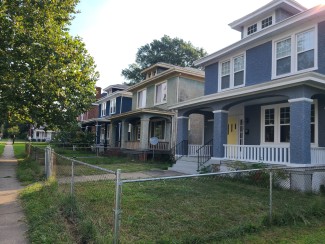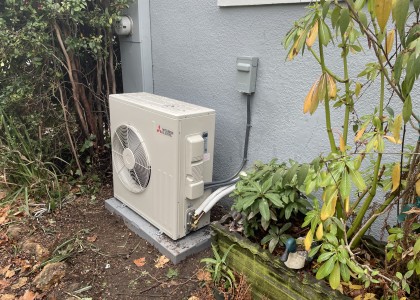Energy insecurity severely affects many households, but most states and utilities do not have policies to support people struggling with energy bills. A new ACEEE policy brief identifies strategies to reduce barriers to efficiency measures that cut bills.
Millions of households in the United States struggle to pay their energy bills, forcing many households to forgo other necessities, use unsafe methods to heat and cool their homes, or experience utility shutoffs. Utilities shut off electric or gas service to households more than four million times between January and October 2022 alone. Energy insecurity and utility shutoffs harm well-being, health, and safety. Inefficient housing requires higher energy use and increases bills. Ensuring all families have affordable energy bills will require a range of actions by governments and utilities.
A new ACEEE policy brief analyzes the current landscape of affordability approaches based on interviews with utility, government, and nonprofit experts. This brief identifies valuable lessons from the entities already taking action to increase affordability. Some of the critical strategies highlighted by these experts include robust community engagement, proactively identifying at-risk customers, and making it easier for people to participate in energy efficiency programs.
Strengthening community engagement and information sharing
Engaging community members, especially in disinvested communities, is essential for meeting those communities’ needs. If a government or utility doesn’t truly engage a community, they miss community expertise that can steer a successful energy efficiency or clean energy program. For example, a municipal utility in San Antonio, CPS Energy, has established a practice of “block walking” where staff interact with residents to understand their energy needs, particularly those with high arrearages. The utility finds that partnerships with community-based organizations help them build trust.
Critically, trust is also built when entities make adjustments based on feedback from community members. For example, CPS shares information between partners. When contractors identified common barriers that prevented local households from being able to access weatherization, CPS used this information to advocate to the local government and identify more pre-weatherization support for households, so the households’ experiences led to changes.
Prosperity Works, a community organization in Albuquerque, also works to build trust when offering energy efficiency upgrades that can improve affordability. The group helps low-income families lower energy bills and hires community members to do outreach and coordinate services. Prosperity Works found that residents feel more comfortable sharing information with these local community members. The organization found that people were more frank about the tradeoffs they were making to afford their energy bills when talking with people living in their communities. This information demonstrated the scale of energy unaffordability in the area.
Proactively identifying customers at risk
Identifying customers struggling to afford energy before they are in an acute crisis or at risk of shutoff helps avoid utility shutoffs. Doing so requires proactively identifying customers and neighborhoods most burdened by energy costs.
For example, the Virginia Department of Energy uses public datasets, like the U.S. Department of Energy’s LEAD tool, to prioritize areas for new programs and outreach. Similarly, the Washington State Department of Commerce uses state health department data on areas disproportionately exposed to poor air quality and other environmental justice and health disparities to identify communities to prioritize in their work. Another approach is proactively connecting customers who receive a disconnection notice with energy efficiency and similar services, which provide an opportunity to lower energy use and utility bills.
Because targeting geographic areas can sometimes miss those struggling with unaffordability, a geographic approach should be accompanied by deep community engagement to capture community needs and identify households in particular need of services.
Connecting teams working on energy affordability
In many cases, groups of staff members in government or utility offices working on different programs or aspects of energy affordability, such as an energy efficiency program and a bill assistance program, have limited collaboration with each other. This can lead to programs and staff being less able to complement each other and can limit opportunities to streamline initiatives and simplify processes for households.
In Michigan, a low-income working group brings together organizations working on energy affordability. This group provides opportunities for members to remain informed about other initiatives in the state so they can complement existing approaches. Similarly, other organizations prioritize bringing internal teams together and planning programs collaboratively so that multiple offerings complement each other.
Reducing barriers to participation
Simplifying and reducing application requirements for energy efficiency services is a vital way to reach more households equitably. When an energy efficiency or affordability program’s requirements are challenging or complicated, fewer residents can overcome barriers to access services. Strategies like allowing households to confirm their own eligibility for programs can be valuable, as can reducing application length, making all necessary information available in one place, and using eligibility for other programs as a pathway to qualify for energy efficiency programs.
Toward an affordable energy future
As millions of households struggle to pay energy bills, utilities, regulators, and policymakers must proactively address energy insecurity. Our policy brief provides strategies to help them prioritize community engagement, identify customers at risk of having their utility service disconnected, and ensure that energy efficiency reduces utility bills for overburdened households.


